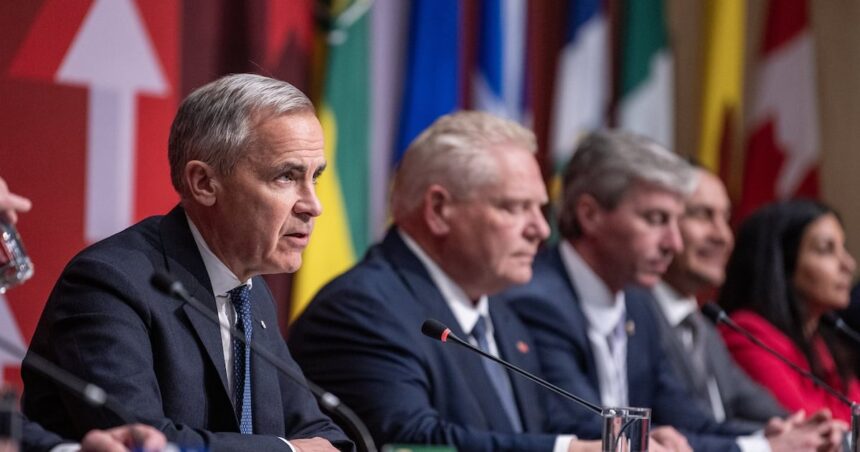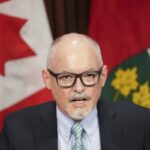In an unprecedented show of economic solidarity, provincial premiers and the Prime Minister convened yesterday in Ottawa for the highly anticipated Canada Trade Talks 2025, marking the most significant domestic trade summit in nearly a decade. The day-long session, held behind closed doors at the Fairmont Château Laurier, brought together leaders from across the political spectrum, united by growing concerns over Canada’s position in an increasingly complex global trade landscape.
“What we’re witnessing today is a recognition that internal trade barriers are costing our economy billions annually,” remarked Finance Minister Anita Williams in her opening address. “The urgency of creating a truly unified Canadian market has never been more apparent.”
The summit comes at a critical juncture for the Canadian economy. Recent data from Statistics Canada reveals that inter-provincial trade impediments currently cost the economy an estimated $130 billion annually—roughly 6.7% of the country’s GDP. These figures have alarmed policymakers, particularly as Canada’s economic growth has slowed to 1.2% in the second quarter of 2025, falling behind several G7 counterparts.
British Columbia Premier David Chen, who has emerged as a key advocate for trade reform, presented a comprehensive proposal to harmonize regulations across provinces. “We’re essentially operating as 13 separate economies rather than one cohesive unit,” Chen told reporters during a brief mid-day press conference. “The regulatory fragmentation is particularly devastating for small and medium enterprises that lack the resources to navigate different provincial requirements.”
The summit’s agenda focused on four key areas: eliminating barriers to labor mobility, harmonizing transportation regulations, standardizing business licensing, and creating a unified approach to procurement. Sources close to the discussions indicated that the labor mobility talks progressed significantly, with leaders reaching tentative agreement on mutual recognition of professional credentials across all provinces.
The transportation discussions proved more contentious, according to Alberta Premier Sarah McKinnon. “We have unique geographic and infrastructure considerations that must be respected,” she noted. “However, I’m cautiously optimistic that we’ve made progress toward a framework that balances regional needs with national efficiency.”
International trade pressures are adding urgency to these domestic discussions. Canada’s trade deficit widened to $3.8 billion in June, continuing a concerning trend that economists attribute partly to internal inefficiencies hampering export competitiveness. The summit also addressed Canada’s deteriorating trade relationship with the United States, its largest trading partner, following recent protectionist measures implemented by Washington.
Economic experts have largely praised the initiative. “This summit represents the most serious attempt to address internal trade barriers since the Agreement on Internal Trade was signed in 1994,” observed Dr. Melissa Huang, Senior Fellow at the Fraser Institute. “The potential economic gains from meaningful reform are substantial—potentially adding up to $7,500 per Canadian household annually.”
The summit concluded with the establishment of a permanent intergovernmental trade secretariat, tasked with implementing the agreements reached and continuing work on unresolved issues. This new body will report quarterly on progress and has been given authority to recommend binding arbitration for persistent disputes.
Despite the positive momentum, challenges remain. Quebec representatives expressed reservations about certain standardization proposals, citing concerns about cultural and linguistic distinctiveness. Similarly, representatives from the territories highlighted the unique challenges facing northern economies.
As Canadian political leaders return to their respective jurisdictions, the true test will be whether the consensus achieved in Ottawa translates into concrete legislative and regulatory changes. The communiqué released following the talks promises implementation of initial reforms within 90 days, though skeptics note that similar promises have faltered in the past.
In an era of intensifying global economic competition and shifting trade alliances, can Canada finally overcome its internal divisions to present a unified economic front to the world? The answer may determine the country’s prosperity for decades to come.
























